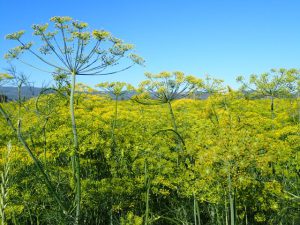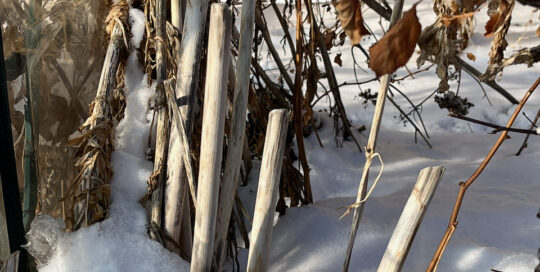Companion Planting to Protect Vegetables in the Garden
Views: 2837

If you have more pests than you’d like to see in your garden this year, it’s still not too late to use trap crops to reduce some of the pressure off of your desirable plants. Many trap crops are basically sacrificial plants that appeal enough to insects to draw them away from your veggies, and give you a specific location to find and destroy them. Others are pungent enough to dissuade pests from wanting to be in the area.
Colorado Potato Beetle
The Colorado potato beetle is a plague to many gardeners. Very few pesticides are effective on it, and picking them off by hand can be exceedingly time consuming. Tansy is an excellent herb to plant near your potato patch to help ward off the beetles. But tansy should only be used if you have a severe problem. It can be invasive, if not kept under close control. Another plant, although equally as vigorous (if not more so) is horseradish. Planted near the potatoes, they should help discourage the potato beetles. A less invasive choice is planting eggplants near your potatoes to draw out the beetles. And while it doesn’t seem to make much sense to plant one desirable vegetable to protect another, if you’re not a fan of eggplant, go for it!
Cabbage pests
Cabbage is another vegetable often plagued by multiple pests. Cabbage loopers are the common caterpillar eating holes in your cabbage leaves. Many areas also have issues with the diamondback moth’s larvae that does the same. Fortunately, the diamondback moth is not picky on its Brassica choice. So, planting species such as collards can lure the moth away from your cabbage. Other trap crop options for potatoes include radishes for flea beetles and root maggots, plus nasturtiums are effective against not only flea beetles, but aphids, cucumber beetles, and the dreaded squash vine borer.
Hornworms
In many parts of the country, lush tomatoes mean healthy tomato hornworms. These finger-sized caterpillars can devastate plants if they arrive in great numbers. Lovage, a perennial herb that tastes a lot like celery, is attractive to hornworms, but if you don’t have lovage in your garden already you can plant dill in groups near your tomatoes. The hornworms often prefer the dill to the tomatoes reducing pressure, and giving you an easy place to look for them since they are more easily spotted on the dill.
Thrips are a tiny insect that bores within the stem of many plants, and even garlic is not immune. Since the leaves are what fuels development of the desired bulb, it’s important to keep them pest free. So if thrips are a problem, plant marigolds among your garlic plants to keep them away.
Sometimes you want to plant a different variety of the same species to act as a decoy in your main crop. For instance, the squash vine borer is a serious problem in many parts of the country. Try planting blue hubbard squash nearby to see if the borers will choose that plant over the ones you like.
If you have a lot of pests, see what you can plant to change their focus. It might not be enough to eliminate all pest pressure, but hopefully it will be enough to give you a successful harvest.
Meet Amy Grisak
Amy is a freelance author and photographer in Great Falls, MT who specializes in gardening, foods, and sustainable agriculture. She provides information on every kind…
Amy's Recent Posts

This Little Piggy is a Problem: Dealing with Feral Hogs








